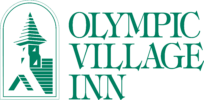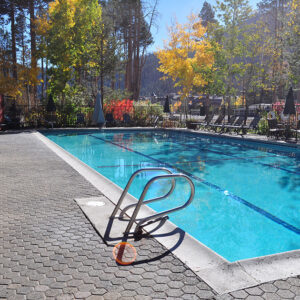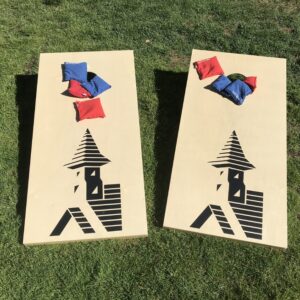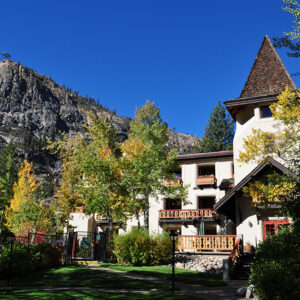Stay Close to the Olympic Spirit
Back in the 1950s, Squaw Valley was a new and tiny ski area consisting of one chair lift, two rope tows, and a fifty-room lodge, mostly surrounded by undeveloped areas. There was only one homeowner in the area, Alexander Cushing, who happened to be the president of the Squaw Valley Development Company. He petitioned the governor to support an Olympic bid, and the site was selected in 1955, beating out the assumed favorite in Innsbruck, Austria as well as St. Moritz, Switzerland and Chamonix, France.
Since Squaw Valley was an unincorporated village at the time, all the venues and infrastructure had to be constructed…in four years. The California Olympic Commission retained Skidmore, Owings & Merrill to undertake studies of sites, facilities, and costs involved in the Games. In previous years the athletes stayed in hotels or with local families, but since Squaw Valley didn’t have any, the first Olympic Village was created. All the athletes slept in dorms (see photo at top of page) and ate together in a central dining hall, all within walking distance to the venues. The construction of all the new facilities allowed for new technology and advancements, like artificial ice for the skating rinks and a result tabulating computer provided by Silicon Valley’s IBM. Cross-Country Ski trails were constructed 12 miles away on the west shore, and in 2010 much of the trail was restored for public use. Blyth Memorial Arena was the main center for the games, holding the ceremonies, skating, and hockey events. Flaws in the roof design caused it to collapse during a heavy snowfall in 1983 and the building was demolished. The athletic center still remains, known now as Olympic House.
Squaw Valley was also the first Games in the United States to receive federal funding to build the facilities. They also sold the broadcasting rights to CBS (and when officials were unsure about a run in the men’s slalom they asked if they could review the CBS video tape, essentially inventing “instant replay”). Walt Disney produced both the opening and closing ceremonies, though the opening ceremony was delayed due to a massive blizzard that shut down traffic.
In the late 1970s Phil Carville bought nearly 100 acres near the base of Squaw Valley to pursue an ambitious development plan. That plan included completely revamping the old Olympic village dormitories, changing them from a cold, usually empty remnant of another time into warm, modern timeshare condominiums which opened in 1981 as the aptly named Olympic Village Inn.















